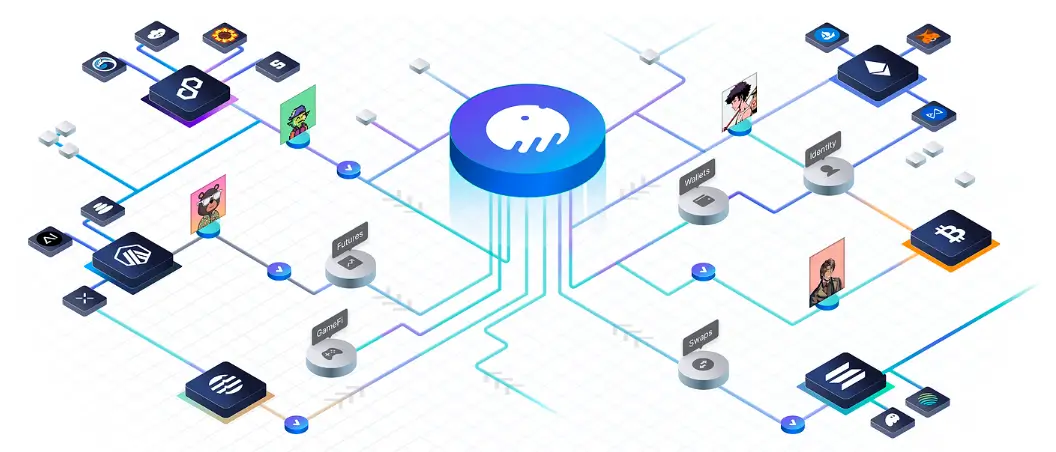V3 Research
Exploring Chain Abstraction
NEAR Documentation
NEAR 文档解释链抽象如何通过 NEAR Intents、链签名等技术,让用户在不理解底层链的情况下跨链操作,开发者专注业务逻辑,提升多链应用可用性。
Blockworks
Blockworks 文章概述链抽象的意义、优势、应用场景与挑战,指出其通过整合流动性和改善 UX,为 Web3 增长奠定基础,并分析 Particle Network 等实践方案。
CryptoForInnovation
该文简要说明链抽象概念,指出其通过统一多链交互和交易体验,降低碎片化带来的学习与操作成本,推动区块链技术更易于大众使用。
CoinGecko
CoinGecko 教程介绍链抽象的动机、关键收益及主流实现方式,强调其让开发者与用户在无需切换网络与钱包的情形下享受跨链功能。

Key Findings
- Chain Abstraction: By concealing the technical details of operations across multiple blockchains, it delivers a unified, chain-agnostic experience for both users and developers 1210.
- It relies on components such as account abstraction, cross-chain messaging/bridging, and intent execution networks to integrate wallet management, gas payments, and bridging steps in the background 4511.
- While preserving the security models of individual chains, chain abstraction is designed to boost usability, aggregate liquidity, and support the deployment of large-scale applications 2926.
Core Concepts and Mechanisms
- Chain abstraction exposes only the business intent at the frontend, while an execution/proof system in the background automatically selects the optimal path, signs, and executes the transaction on the target chain, so users need not worry about which chain the transaction occurs on 12.
- Projects such as NEAR, Particle Network, and Connext achieve this mechanism through an "intent + solver" network, chain signatures, or cross-chain calls 1523.
Value and Advantages
- For Users: It offers unified accounts, one-off payments, and seamless access to multi-chain assets, delivering an experience similar to Web2 applications 41025.
- For Developers: It enables the creation of chain-agnostic decentralized applications (dApps) without needing to integrate and maintain each chain individually, thereby boosting development efficiency and potential user reach 28.
- For the Ecosystem: It consolidates fragmented liquidity, reducing the risk of breakages during bridging, and promotes multi-chain interoperability 926.
Key Technical Modules
- Account Abstraction (AA): Utilises smart contract wallets in place of externally owned accounts (EOAs) to enable features such as social login, gas token abstraction, and batch transactions 1112.
- Cross-Chain Messaging Layer: Solutions like LayerZero, Axelar, IBC, and Connext provide universal messaging and asset transport while ensuring finality and security 222325.
- Intent Execution Network: Users sign their intent, and solvers bid to complete the best cross-chain route, subsequently submitting proof on the target chain 514.
Challenges and Misconceptions
- Centralisation Risks: If controlled by a single aggregation interface or a few executors, it could become a single point of failure 1018.
- Security and Proof Costs: Cross-chain proofs, multi-party computation (MPC), or light client verification still need to balance performance with security 1422.
- Conceptual Confusion: Chain abstraction does not eliminate the differences between chains, nor is it merely a simple cross-chain bridge; it emphasises an "experience layer abstraction" while the underlying chains continue to operate independently 913.
Future Outlook
With the explosion of Rollups and application-specific chains, a multi-chain world is inevitable. Chain abstraction is seen as a critical piece in ushering billions of users into Web3 1126. Wallets, payment systems, gaming platforms, and other scenarios are already beginning to integrate chain abstraction capabilities; as intent networks and native AA standards mature, users may eventually interact with blockchain technology as seamlessly as they do with the internet.
(Visit Discover for more)
72 days ago